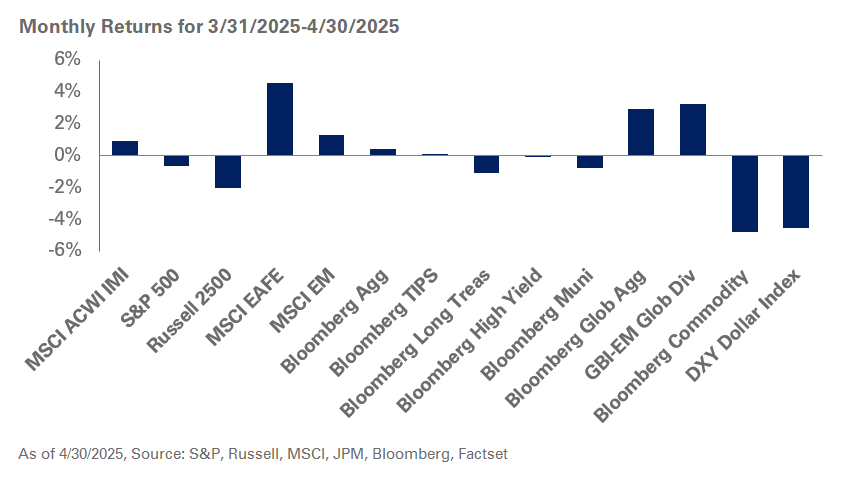In this blog, the final installment of a three-part series, we cover the completion of the termination of the defined benefit plan of our client – a corporate employer – through an annuity buyout to an insurance company.
The Challenge
As the plan sponsor enters the final stretch of terminating its defined benefit plan, our client needed to consolidate the plan’s liability-hedging managers into a single manager to simplify implementation, further refine the liability hedge, and potentially allow for an asset-in-kind transfer. Subsequently, the focus shifted to selecting an insurance company for the final transaction.
NEPC’s Role
We have assisted in preparing assets for the full or partial termination process for many clients, all with unique circumstances and implications for their individual investment portfolios. For instance, in this case, the sponsor approved termination in an underfunded position which required a terminal contribution; this is less common given that most sponsors look to be in a fully funded position prior to proceeding with the termination process.
The plan termination involved lump sums paid to active and terminated vested employees and annuities for those not accepting the lump sums, as well as retirees and beneficiaries. Expected lump sum payments amounted to over 30% of plan assets. Cash was raised to ensure liquidity for lump sum payments by liquidating equity holdings once the expected amount and timing were known.
As outlined in part two of this series, key actions to prepare plan assets for annuitization included the liquidation of the private-markets investments and simplification of the public-markets portfolio. After these transactions, the portfolio included two equity index funds and three liability-hedging funds, and was significantly more liquid and flexible to support the de-risking strategy.
The liability hedging positions consisted of a Treasury STRIPS Index fund, an active long-credit manager and an LDI completion manager. The STRIPS Index fund was liquidated, and assets were transferred in-kind from the long-credit manager and consolidated with the LDI completion manager. The LDI completion manager was hedging 100% of the liability interest-rate risk for a plan that was not fully funded and using only 70% of plan assets. This required an overweight to the long end of the yield curve relative to the liability to achieve the total desired interest-rate hedge.
As more clarity was provided by the actuary on cash needs for the lump sums, it was determined that excess cash not needed for lump sums could be transferred to the LDI completion manager. Additional assets allowed the completion manager to better match the liability along the yield curve by reducing the overweight at the long end. Ultimately, the LDI completion manager was running a portfolio with an estimated funded status volatility in the 1%-to-2% range. This minimized the risk to funded status and narrowed the range of final outcomes for the final contribution that would be required by the sponsor.
The emphasis of the sponsor then turned to the selection of an insurance company. The primary focus of the LDI completion manager was to fully hedge the liability. In addition, the manager invested the portfolio in securities it believed may be acceptable to an insurance company through an asset-in-kind transfer which could potentially help reduce the final insurance premium. A list of the bond holdings was provided to the insurance companies for their portfolio team to review and determine whether they would accept any securities as part of the final transaction. This was a complex process which required a high level of coordination among the sponsor, actuary, LDI completion manager and NEPC. Ultimately, the final premium consisted of about 60% assets in-kind with the balance in cash.
While risk can be minimized greatly through asset allocation, we recognize that for many sponsors removing the liability from the books is the most desirable outcome. The termination process is somewhat lengthy and costly and involves the time and resources of the benefits group, investment teams and the investment committee at your organization. In this case, termination was achieved three years after it was approved by the board. Typically, sponsors make some preparations for termination as part of their long-term journey plan and may realize a shorter process of 12-to-18 months.
The (Final) Facts
| Plan assets 3/31 | $700 million |
| Lump sums paid in April | $230 million |
| Final premium to insurer | $580 million |
| Assets in kind | $350 million |
| Portfolio Cash* | $130 million |
| Terminal Contribution | $100 million |
*Reflects liquidation of securities not accepted by selected insurance company.
What’s Next?
We can help you prepare assets for a full or partial termination of your defined benefit plan. Below are some of the key lessons from this case and potential considerations for plan sponsors contemplating a full or partial plan termination:
- Risk management/glidepath: Adjusting the de-risking strategy as more is known about the time horizon for termination was key in this case. The original glidepath was based on funded status and shifted to time-based once the finite time horizon for termination was clear. In this case, risk assets were maintained but significantly reduced and ultimately eliminated in the final year leading up to termination to meet liquidity needs for the lump sums and to minimize the risk of the final contribution. We develop a customized strategy to address the unique needs of sponsors when preparing portfolios for plan termination.
- LDI implementation: Consider whether an LDI completion manager can assist in your current strategy, especially if pursuing a partial or full plan termination. A completion manager can consider current portfolio holdings and help ensure the plan sponsor is meeting objectives on the glidepath. We often find that de-risking strategies can be dynamic and fluid which may require timely implementation. For example, we have seen several clients recently update their glidepath due to plan changes (e.g. freeze), discretionary contributions or strong gains in funded status. A completion manager can help efficiently realign a portfolio to its new hedging objective in the event of a strategy adjustment or a move along the glidepath. Approaching a termination, a completion manager can be instrumental in minimizing interest-rate risk and assisting with asset-in-kind transfers as applicable.
- Liquidity, liquidity, liquidity: A key aspect of portfolio management is ensuring portfolio liquidity matches the time horizon, especially for de-risking. In this case, the time horizon changed from long term to finite overnight, which required a need to sell the least liquid holdings relatively quickly to ensure the sponsor could achieve the objective; the process of liquidating private-markets assets took approximately nine months. Any sponsor seeking to minimize funded status volatility and, ultimately, looking to exit the pension plan must carefully consider whether the current portfolio liquidity profile fits with their objectives and time horizon.
While the issues facing our client are common to many plan sponsors, we believe each plan has its own unique characteristics, goals and threshold of risk, and we customize our recommendations accordingly. If you have questions or want to discuss the specifics of your organization’s defined benefit plan, please contact your NEPC consultant.



